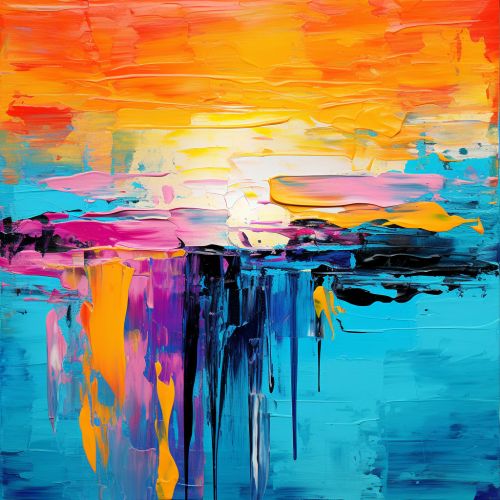Machine Learning in Art
Introduction
Machine learning, a subset of artificial intelligence, has found its way into various sectors, including the world of art. Machine learning in art refers to the application of machine learning algorithms and techniques to create, analyze, and understand art. This field is a convergence of technology and creativity, where machines are trained to generate artistic content or assist artists in their creative process.
History and Evolution
The intersection of machine learning and art is not a recent phenomenon. The history of machine learning in art can be traced back to the 1950s and 1960s, when pioneers like Harold Cohen began experimenting with computer-generated art. However, the true potential of machine learning in art started to be realized with the advent of more sophisticated algorithms and increased computational power in the late 20th and early 21st centuries.
Machine Learning Techniques in Art
Various machine learning techniques have been employed in the field of art. These include but are not limited to:
Supervised Learning
In supervised learning, the machine is trained on a labeled dataset. This technique has been used in art for tasks such as style recognition, where the machine is trained to recognize the style of different artists.
Unsupervised Learning
Unsupervised learning involves training the machine on an unlabeled dataset. This technique is often used in art for tasks like pattern discovery and abstraction.
Reinforcement Learning
In reinforcement learning, the machine learns by interacting with its environment and receiving feedback. This technique has been used in art for tasks such as interactive art installations, where the machine learns from the reactions of the audience.
Deep Learning
Deep learning, a subset of machine learning, has been particularly influential in the field of art. Techniques like convolutional neural networks (CNNs) and generative adversarial networks (GANs) have been used to create stunning pieces of art.
Applications of Machine Learning in Art
Machine learning has been applied in various ways in the field of art, including:
Art Generation
One of the most prominent applications of machine learning in art is art generation. Algorithms are trained to generate art that is similar to human-created art. This includes paintings, music, poetry, and more.
Art Analysis
Machine learning can also be used to analyze art. This includes tasks like style recognition, where the machine is trained to recognize the style of different artists, and content analysis, where the machine is trained to understand the content of a piece of art.
Interactive Art
Machine learning has also been used to create interactive art installations. In these installations, the machine learns from the reactions of the audience and adjusts the art accordingly.


Challenges and Ethical Considerations
While machine learning in art offers many exciting possibilities, it also presents several challenges and ethical considerations. These include questions about authorship and originality, the potential for misuse of technology, and the impact on traditional art forms and artists.
Future Directions
The future of machine learning in art is promising, with potential advancements in both the technology and its applications. As machine learning algorithms become more sophisticated and computational power increases, the possibilities for machine learning in art will continue to expand.
